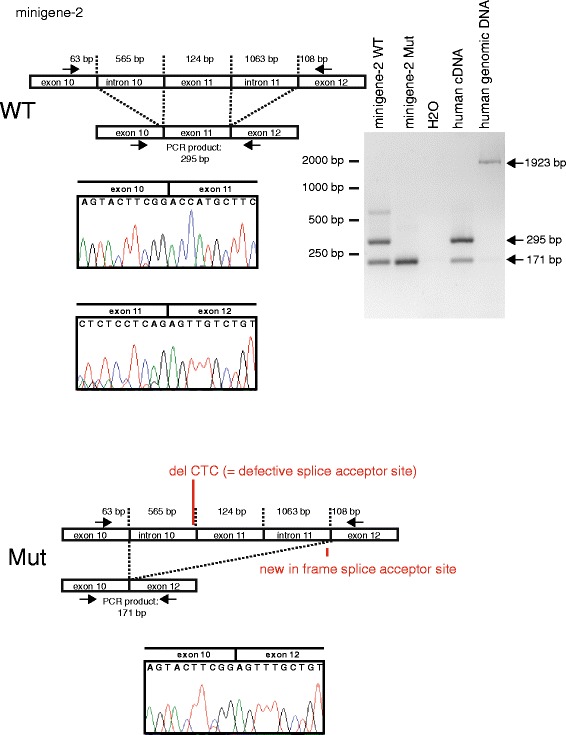Fig. 3.

To investigate the consequence of the patient mutation, minigene-2 was engineered (containing exon 10, intron 10, exon 11, intron 11 and exon 12 of human FLCN). After transfection into mIMCD cells (of mouse origin) RNA and afterwards cDNA was prepared and subjected to sequencing and PCR. As expected, the PCR using the WT minigene-2 results (the fp and rp are located in exon 10 and exon 12, respectively) in a band of 295 bp (expected size after splicing of intron 10 (=565 bp) and intron 11 (=1063 bp)). Analysis of the mutant minigene-2 reveals that - as expected - in addition exon 11 (=124 bp) is spliced out resulting in a smaller PCR product of 171 bp. Sequencing of the PCR products reveals, that the defective splice acceptor site in front of exon11 leads to skipping of exon11. Since the splice acceptor site of exon 12 is in frame, fusion of exon 10 and exon 12 can be detected. Interestingly, also with the WT minigene-2 as well as with human cDNA skipping of exon 11 can be observed. Human cDNA and human genomic DNA served as controls for the PCR products. Sanger sequencings confirmed the results, electropherograms of the crucial junctions are shown
